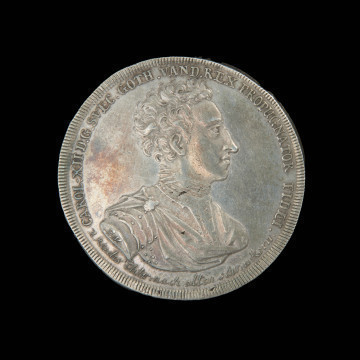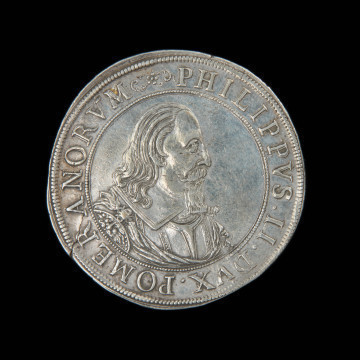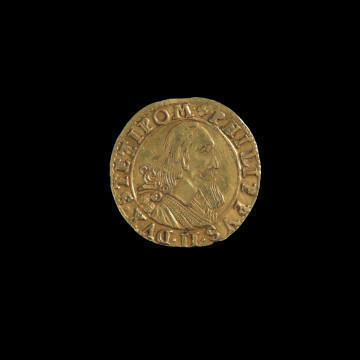
The thaler on the occasion of the establishment of religious freedom in Silesia
1709
National Museum in Szczecin
Part of the collection: Pomeranian coins
In 1705, after a break of several years, minting was resumed in Szczecin, which was related to the ongoing Third Northern War and the need to pay for the army of the Swedish King Charles XII (1697-1718). The provincial government allowed the mint-master Jan Memmies to run the mint, counting on cheap precious metals from war trophies. The mint produced a relatively large number of 2/3rds of a thaler for wages and ducats, and incidentally also thalers, wittens and half-shillings. Contrary to expectations, this activity did not bring profits, and in 1709 the mint was closed. That was the last accent of Swedish coinage in Szczecin as, in 1713, the city was occupied by the Prussian army. Amongst the coins minted by Charles XII in Szczecin, special issues, whose content refers to ancient traditions, are worth mentioning. They were minted during the Great Northern War, after moving military operations to the territory of Saxony. After the victory over the Saxon army, Charles XII forced Augustus II the Strong, King of Poland and Elector of Saxony, to abdicate from the Polish throne. It was sealed by the Peace Treaty of Altranstӓdt, concluded in 1706. To commemorate these events, two ducats were minted at the Szczecin mint, with a significant composition on the reverse. The allegorical scene of a lion destroying columns (pillars) was inspired by the biblical tale of Hercules, to whom ancient rulers such as Alexander the Great and Julius Caesar compared themselves. By drawing on this tradition, Charles XII wanted to show that he was like the invincible hero defending fellow rulers against their enemies. King Charles was often called the 'Lion of the North', thanks to his exploits, just like his great predecessor, Gustavus II Adolphus. It is worth noting that the composition was modelled on the medal of 1631 of Frederick Henry of Orange, Governor of the United Provinces of the Netherlands. His victory over the Spaniards was portrayed in such a symbolic way, and the columns (columns of Hercules) additionally highlighted the triumphs of the Dutch navy and their rule on the waters of the Ocean. The front side of the biconical depicts the standard image of King Charles XII in military dress, holding a regiment and a rapier or sword. The military style resulted from the ruler's fondness for the uniform, which became his trademark. The IM initials on the obverse refer to Jan Memmies, a mint-master at the Szczecin mint, for whom the production of coins according to the standards failed.
Genowefa Horoszko
Author / creator
Dimensions
cały obiekt: height: 1.3 mm, diameter: 28.8 mm
Object type
commemorative coin
Technique
minting
Material
gold
Creation time / dating
Creation / finding place
Owner
National Museum in Szczecin
Identification number
Location / status

1709
National Museum in Szczecin

1617
National Museum in Szczecin

1615
National Museum in Szczecin
DISCOVER this TOPIC
Castle Museum in Łańcut
DISCOVER this PATH
Educational path